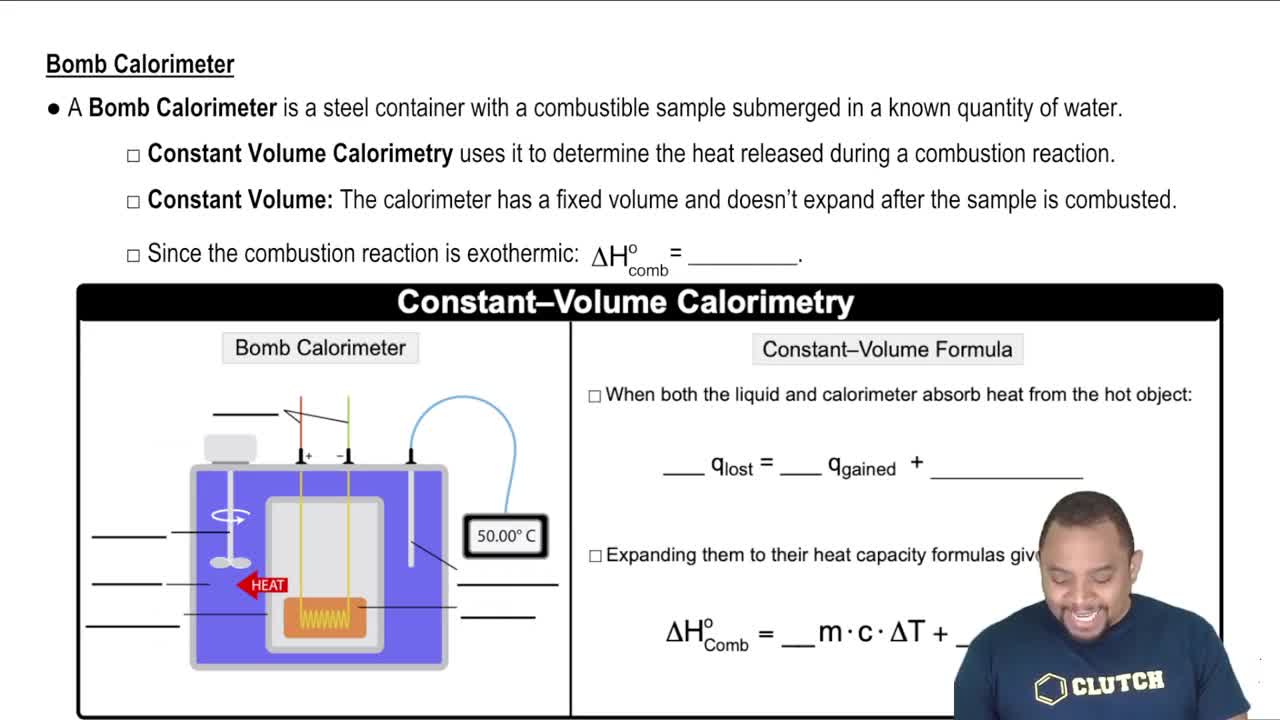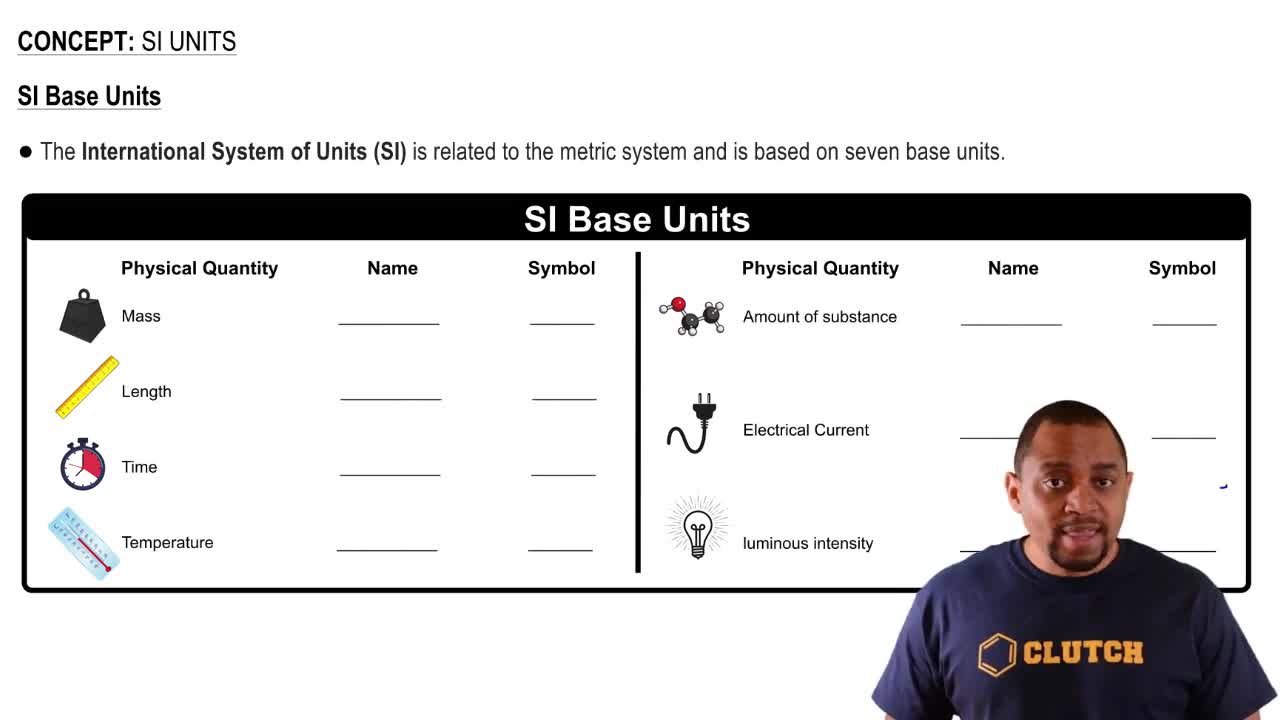Here are the essential concepts you must grasp in order to answer the question correctly.
Work in Thermodynamics
In thermodynamics, work is defined as the energy transferred when a force is applied over a distance. For gases, work can be calculated using the formula W = -PΔV, where W is work, P is pressure, and ΔV is the change in volume. The negative sign indicates that work is done by the system when it expands against an external pressure.
Recommended video:
First Law of Thermodynamics
Pressure-Volume Work
Pressure-volume work occurs when a gas expands or contracts in response to external pressure. In the context of breathing, when the lungs expand, they do work against the atmospheric pressure. The amount of work done can be quantified by the product of the external pressure and the change in lung volume during inhalation or exhalation.
Recommended video:
Constant-Volume Calorimetry
Units of Work
Work is measured in joules (J) in the International System of Units (SI). One joule is defined as the work done when a force of one newton displaces an object by one meter. In the context of the given question, converting the volume change from liters to cubic meters is necessary to ensure that the units are consistent when calculating work.
Recommended video:




